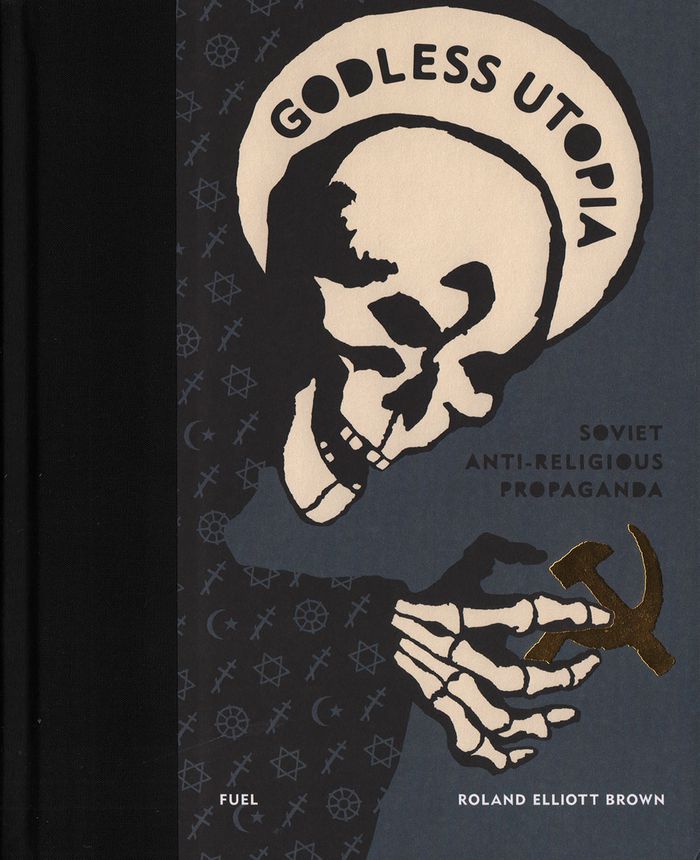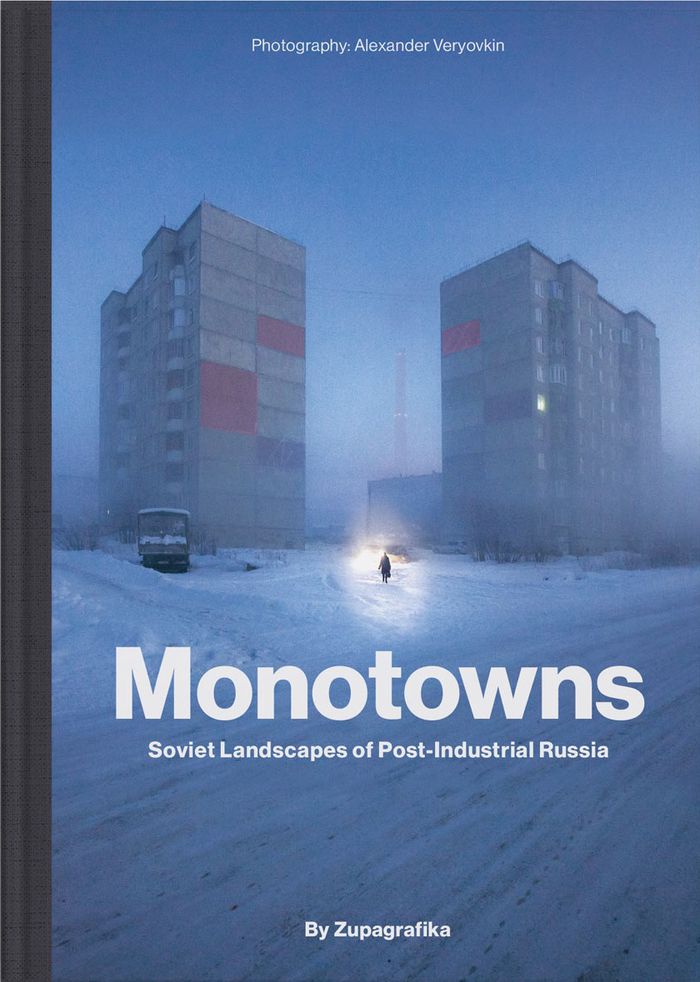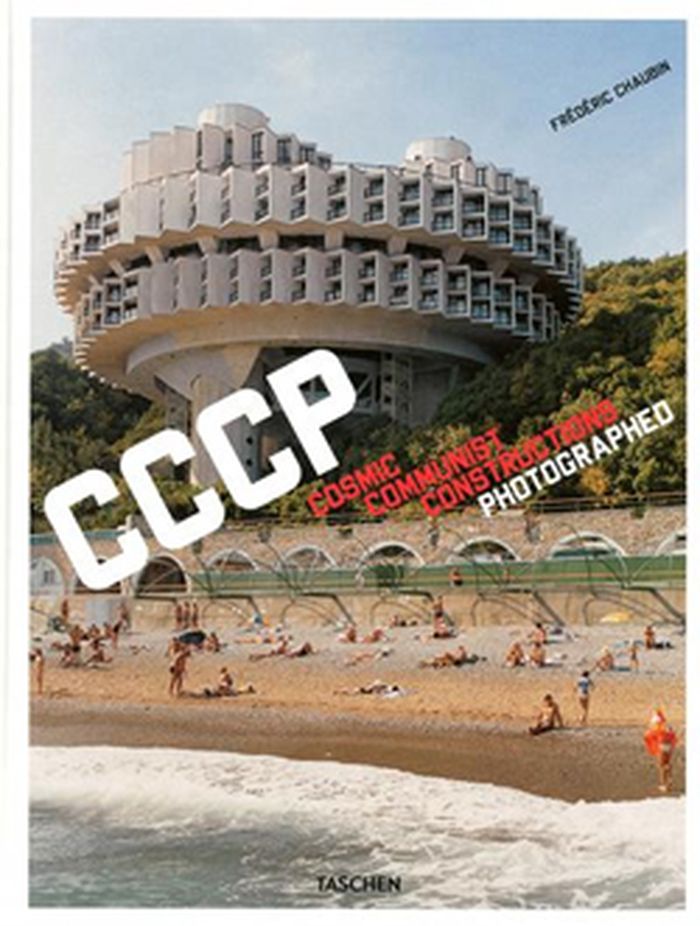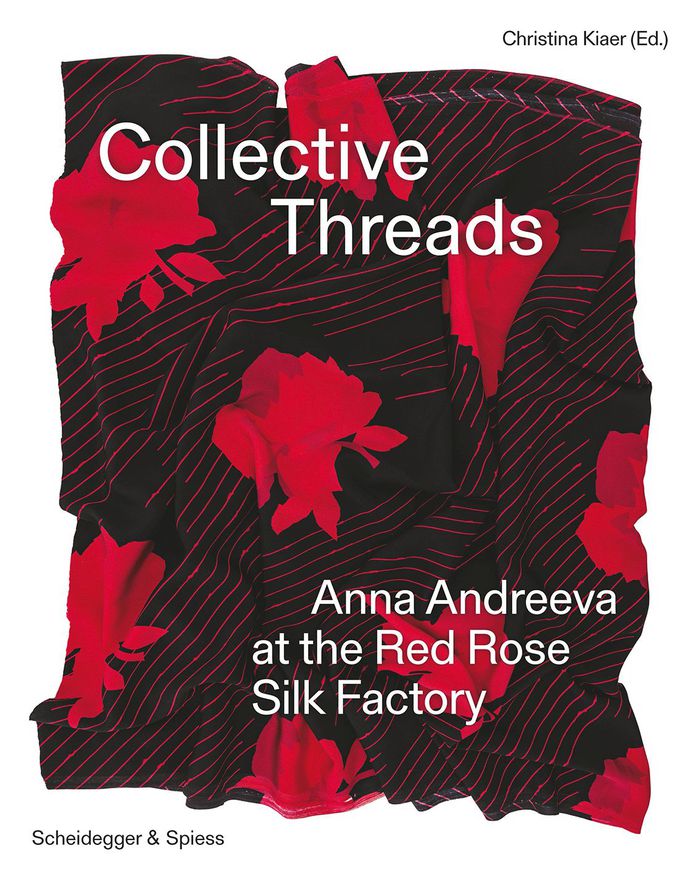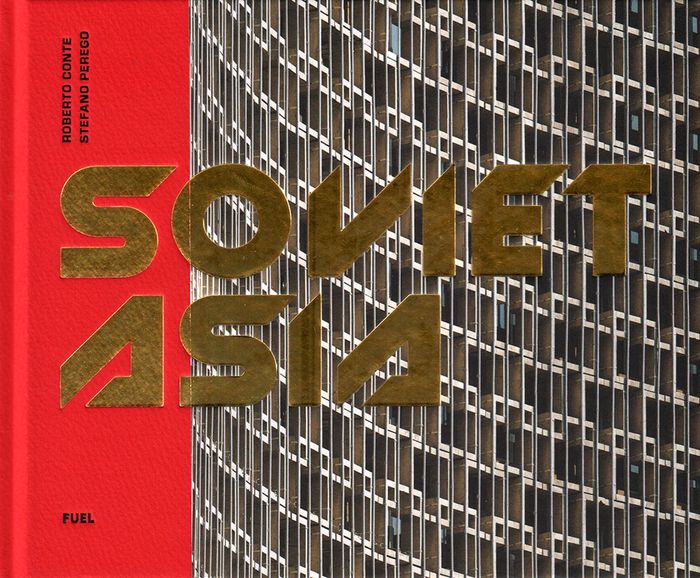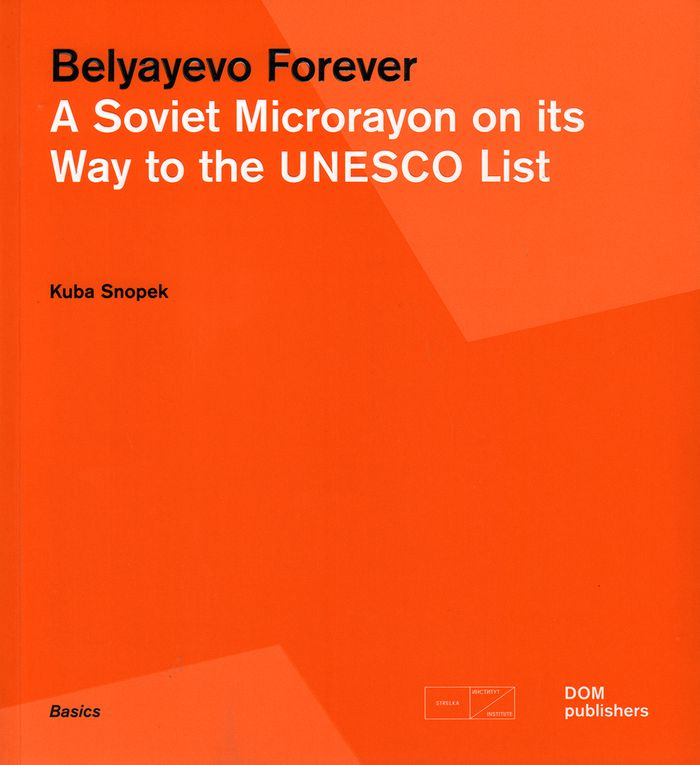books
$59.95
(available to order)
Summary:
101 projets de petites maisons présentés par Olivier Leblois tels que : "Habiter un mur comme un lézard", "Dove or eagle", "Sous les jupes de maman", "Back to the USSR", "Hitchcock va à la pêche", "Housse music", "La grange, la ruelle et la ligne d'horizon", "Voir sans être vu", "Giacometti ou l'entre-deux", "Hommage à...", "Like a chair on the grass", "Legoland ou la(...)
101 petites maisons - small houses
Actions:
Price:
$59.95
(available to order)
Summary:
101 projets de petites maisons présentés par Olivier Leblois tels que : "Habiter un mur comme un lézard", "Dove or eagle", "Sous les jupes de maman", "Back to the USSR", "Hitchcock va à la pêche", "Housse music", "La grange, la ruelle et la ligne d'horizon", "Voir sans être vu", "Giacometti ou l'entre-deux", "Hommage à...", "Like a chair on the grass", "Legoland ou la Victoire de Samothrace", "Micro-Pyranèse", "The wind towers"... Des propositions - autant de dessins - présentés sous l'angle du manifeste, du rêve, de l'allégorie, ou de la réalité habitée.
books
October 2006, Marseille
Residential Architecture
$49.95
(available in store)
Summary:
Drawing on the early Soviet atheist magazines "Godless" and "Godless at the Machine", and postwar posters by Communist Party publishers, author Roland Elliott Brown presents an unsettling tour of atheist ideology in the USSR. Here are uncanny, imaginative and downright blasphemous visions from the very guts of the Soviet atheist apparatus: sinister priests rub shoulders(...)
Godless utopia: Soviet anti-religious propaganda
Actions:
Price:
$49.95
(available in store)
Summary:
Drawing on the early Soviet atheist magazines "Godless" and "Godless at the Machine", and postwar posters by Communist Party publishers, author Roland Elliott Brown presents an unsettling tour of atheist ideology in the USSR. Here are uncanny, imaginative and downright blasphemous visions from the very guts of the Soviet atheist apparatus: sinister priests rub shoulders with cross-bearing colonial torturers, greedy mullahs, a cyclopean Jehovah and a crypto-fascist Jesus; Russian cosmonauts mock God from space while vigilant border guards nab American Bible smugglers. "Godless Utopia" is the occult grimoire of a lost socialist anti-theology.
Art Theory
$51.95
(available to order)
Summary:
Ilya Rabinovich is a Dutch-Moldovan photographer, internationally acclaimed for his unique photo projects. Rabinovich is based in Amsterdam, where he graduated from the Rijksakademie in 2000. In 2008 he travelled to his birthplace Chiinu in Moldova to photograph the exhibitions in its national museums. Here he encountered a remarkable process, which led to the(...)
Museutopia : a photographic research project by Ilya Rabinovich
Actions:
Price:
$51.95
(available to order)
Summary:
Ilya Rabinovich is a Dutch-Moldovan photographer, internationally acclaimed for his unique photo projects. Rabinovich is based in Amsterdam, where he graduated from the Rijksakademie in 2000. In 2008 he travelled to his birthplace Chiinu in Moldova to photograph the exhibitions in its national museums. Here he encountered a remarkable process, which led to the photographic project Museutopia. The country, formerly known as Moldavia, was annexed by the former USSR in 1940 and remained under Soviet rule till 1991. This period of its history has become distorted or totally erased in the national museums. Each museum orchestrates its own ideal image of Moldova.
Photography monographs
$50.00
(available to order)
Summary:
A photographic exploration of the Soviet monotowns - urban settlements erected around single industries in the hinterlands of the former USSR -; some thriving, others struggling to survive, still others partially abandoned. Through nine chapters with over 130 photographs taken by Russian photographer Alexander Veryovkin, Monotowns by Zupagrafika captures the(...)
Monotowns: Soviet landscapes of post-industrial Russia
Actions:
Price:
$50.00
(available to order)
Summary:
A photographic exploration of the Soviet monotowns - urban settlements erected around single industries in the hinterlands of the former USSR -; some thriving, others struggling to survive, still others partially abandoned. Through nine chapters with over 130 photographs taken by Russian photographer Alexander Veryovkin, Monotowns by Zupagrafika captures the post-industrial landscapes and Soviet-era architecture of the monogorods extending from the Arctic Circle to the Russian Far East, such as Vorkuta, Norilsk, Mirny, Kirovsk, Tolyatti, Cherepovets, Magnitogorsk, Monchegorsk and Nikel, and the daily lives of their inhabitants. Includes informative texts providing a valuable insight into the urban development of the featured cities and a foreword by the architectural critic Konstantin Budarin.
Modernism
$80.95
(available to order)
Summary:
Photographer Frédéric Chaubin reveals 90 buildings sited in fourteen former Soviet Republics which express what he considers to be the fourth age of Soviet architecture. His poetic pictures reveal an unexpected rebirth of imagination, an unknown burgeoning that took place from 1970 until 1990. Contrary to the 1920s and 1950s, no “school” or main trend emerges here. These(...)
Photography monographs
September 2010
Cosmic communist constructions photographed
Actions:
Price:
$80.95
(available to order)
Summary:
Photographer Frédéric Chaubin reveals 90 buildings sited in fourteen former Soviet Republics which express what he considers to be the fourth age of Soviet architecture. His poetic pictures reveal an unexpected rebirth of imagination, an unknown burgeoning that took place from 1970 until 1990. Contrary to the 1920s and 1950s, no “school” or main trend emerges here. These buildings represent a chaotic impulse brought about by a decaying system. Their diversity announced the end of the Soviet Union. Taking advantage of the collapsing monolithic structure, the holes in the widening net, architects went far beyond modernism, going back to the roots or freely innovating. Some of the daring ones completed projects that the Constructivists would have dreamt of (Druzhba Sanatorium, Yalta), others expressed their imagination in an expressionist way (Palace of Weddings, Tbilisi). A summer camp, inspired by sketches of a prototype lunar base, lays claim to Suprematist influence (Prometheus youth camp, Bogatyr). Then comes the "speaking architecture" widespread in the last years of the USSR : a crematorium adorned with concrete flames (Crematorium, Kiev), a technological institute with a flying saucer crashed on the roof (Institute of Scientific Research, Kiev), a political center watching you like Big Brother (House of Soviets, Kaliningrad). This puzzle of styles testifies to all the ideological dreams of the period, from the obsession with the cosmos to the rebirth of identity. It also outlines the geography of the USSR, showing how local influences made their exotic twists before the country was brought to its end.
Photography monographs
$63.00
(available in store)
Summary:
Anna Andreeva (1917–2008) was a Soviet textile designer and leading artist at the famous Red Rose Silk Factory in Moscow from 1944 to 1984. The former Giraud silk factory, nationalized in 1919 after the October Revolution and renamed to commemorate the murdered Polish-German socialist revolutionary Rosa Luxemburg, became a site of collective female design labor that(...)
Collective threads: Anna Andreeva at the Red Rose Silk Factory
Actions:
Price:
$63.00
(available in store)
Summary:
Anna Andreeva (1917–2008) was a Soviet textile designer and leading artist at the famous Red Rose Silk Factory in Moscow from 1944 to 1984. The former Giraud silk factory, nationalized in 1919 after the October Revolution and renamed to commemorate the murdered Polish-German socialist revolutionary Rosa Luxemburg, became a site of collective female design labor that shaped the fashion and material culture of late socialism. Andreeva’s spectacular patterns range from abstract and geometric to cosmic and space-age and to pictorial themes of the city of Moscow and Russian folk art. Her mass-produced designs were among the most popular textile prints distributed within the USSR in the 1960s and 1970s.
Design Monographs
$62.95
(available in store)
Summary:
With the two volumes of Las grandes esperanzas (1976-1992), published in Spanish, Luis Fernández-Galiano looks back on a troubled and fertile era that in Spain began with the Transition to democracy and in the world saw the rise of conservative politics with Reagan and Thatcher at the helm, to last until the historic rupture that followed the fall of the Berlin Wall and(...)
Empenos Sostenibles - Las Grandes Esperanzas 1976-1984
Actions:
Price:
$62.95
(available in store)
Summary:
With the two volumes of Las grandes esperanzas (1976-1992), published in Spanish, Luis Fernández-Galiano looks back on a troubled and fertile era that in Spain began with the Transition to democracy and in the world saw the rise of conservative politics with Reagan and Thatcher at the helm, to last until the historic rupture that followed the fall of the Berlin Wall and the break-up of the USSR. The first tome, Empeños sostenibles (1976-1984), dissects a period marked by the economic recession and ecological awakening brought on by the petroleum shocks that rocked the planet, matters addressed by two dozen texts on technological alternatives, sustainable construction, and the relationship between architecture and energy.
Contemporary Architecture
$48.00
(available in store)
Summary:
"Soviet Asia" explores the Soviet modernist architecture of Central Asia. Italian photographers Roberto Conte and Stefano Perego crossed the former Soviet republics of Kazakhstan, Kyrgyzstan, Uzbekistan and Tajikistan, documenting buildings constructed from the 1950s until the fall of the USSR. The resulting images showcase the majestic, largely unknown, modernist(...)
Soviet Asia: Soviet modernist architecture in Central Asia
Actions:
Price:
$48.00
(available in store)
Summary:
"Soviet Asia" explores the Soviet modernist architecture of Central Asia. Italian photographers Roberto Conte and Stefano Perego crossed the former Soviet republics of Kazakhstan, Kyrgyzstan, Uzbekistan and Tajikistan, documenting buildings constructed from the 1950s until the fall of the USSR. The resulting images showcase the majestic, largely unknown, modernist buildings of the region. Museums, housing complexes, universities, circuses, ritual palaces—all were constructed using a composite aesthetic. Influenced by Persian and Islamic architecture, pattern and mosaic motifs articulated a connection with Central Asia. Gray concrete slabs were juxtaposed with colourful tiling and rectilinear shapes broken by ornate curved forms: the brutal designs normally associated with Soviet-era architecture were reconstructed with Eastern characteristics.
Modernism
books
$28.50
(available to order)
Summary:
Americans still build millions of dream houses in neighborhoods that sustain Victorian stereotypes of the home as "woman's place" and the city as "man's world." Urban historian and architect Dolores Hayden tallies the personal and social costs of an American "architecture of gender" for the two-earner family, the single-parent family, and single people. Many societies(...)
Redesigning the American dream : gender, housing, and family life, revised and expanded
Actions:
Price:
$28.50
(available to order)
Summary:
Americans still build millions of dream houses in neighborhoods that sustain Victorian stereotypes of the home as "woman's place" and the city as "man's world." Urban historian and architect Dolores Hayden tallies the personal and social costs of an American "architecture of gender" for the two-earner family, the single-parent family, and single people. Many societies have struggled with the architectural and urban consequences of women's paid employment: Hayden traces three models of home in historical perspective — the haven strategy in the United States, the industrial strategy in the former USSR, and the neighborhood strategy in European social democracies — to document alternative ways to reconstruct neighborhoods. Updated and still relevant today as the New Urbanist architects have taken up Hayden's critique of suburban space, this award-winning book is essential reading for architects, planners, public officials, and activists interested in women's social and economic equality.
books
August 2002, New York
Gender Theory in Architecture
$52.95
(available to order)
Summary:
Preservation is ordinarily reserved for architecture that is unique. So how would we go about preserving buildings that are utterly generic? Such is the case with Belyayevo, an ordinary residential district in Moscow. Belyayevo is a typical microrayon – the standardised neighbourhood system that successive Soviet regimes laid out across the USSR in what was the most(...)
January 2016
Belyayevo forever: a Soviet microrayon on its way to the UNESCO list
Actions:
Price:
$52.95
(available to order)
Summary:
Preservation is ordinarily reserved for architecture that is unique. So how would we go about preserving buildings that are utterly generic? Such is the case with Belyayevo, an ordinary residential district in Moscow. Belyayevo is a typical microrayon – the standardised neighbourhood system that successive Soviet regimes laid out across the USSR in what was the most expansive programme of industrialised construction the world has ever seen. Belyayevo’s buildings, and the desolate spaces between them, are identical to thousands of others, but is it different? Kuba Snopek argues that it is. Home to many of the artists of the Moscow Conceptualism school, the place was written into the character of their art. Snopek argues that this intangible heritage is the key to saving a neighbourhood many feel has had its day. But as Russia comes to terms with ist Soviet legacy, will such arguments fall on deaf ears?
